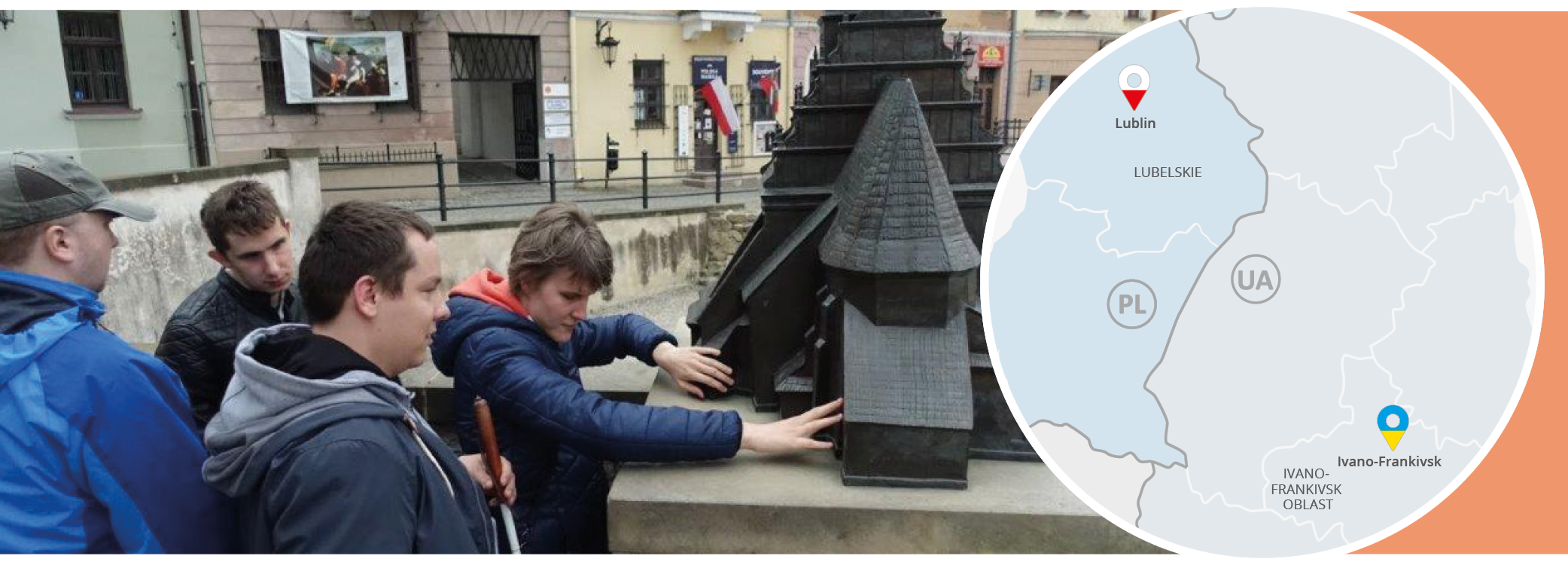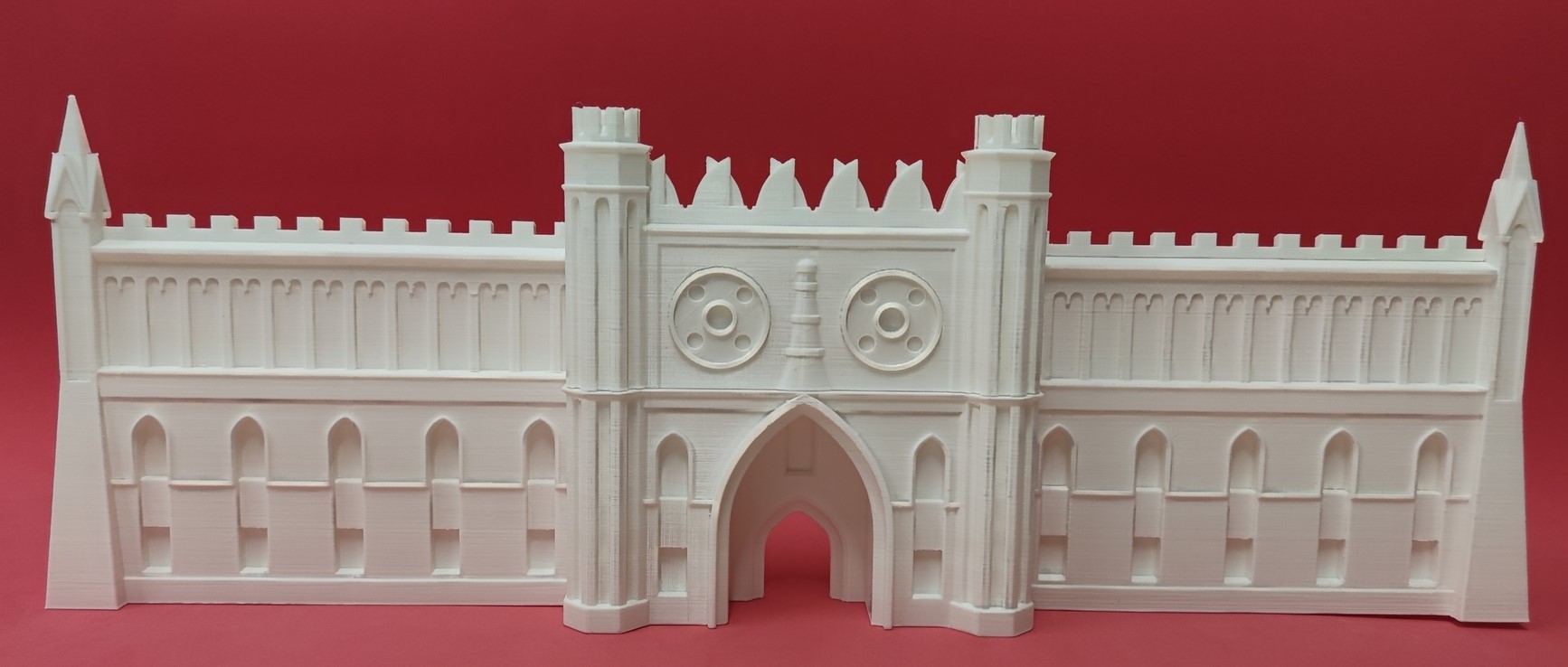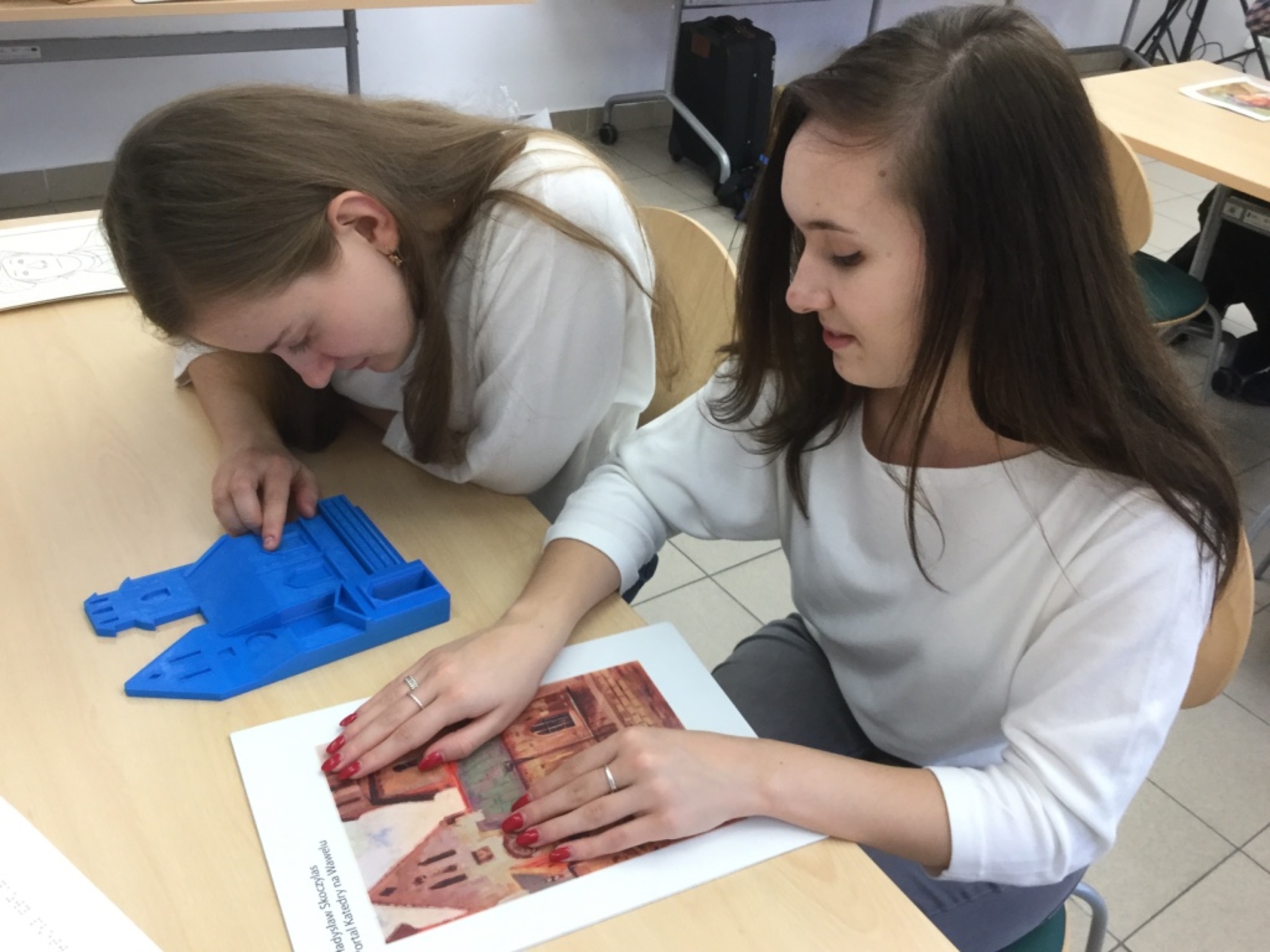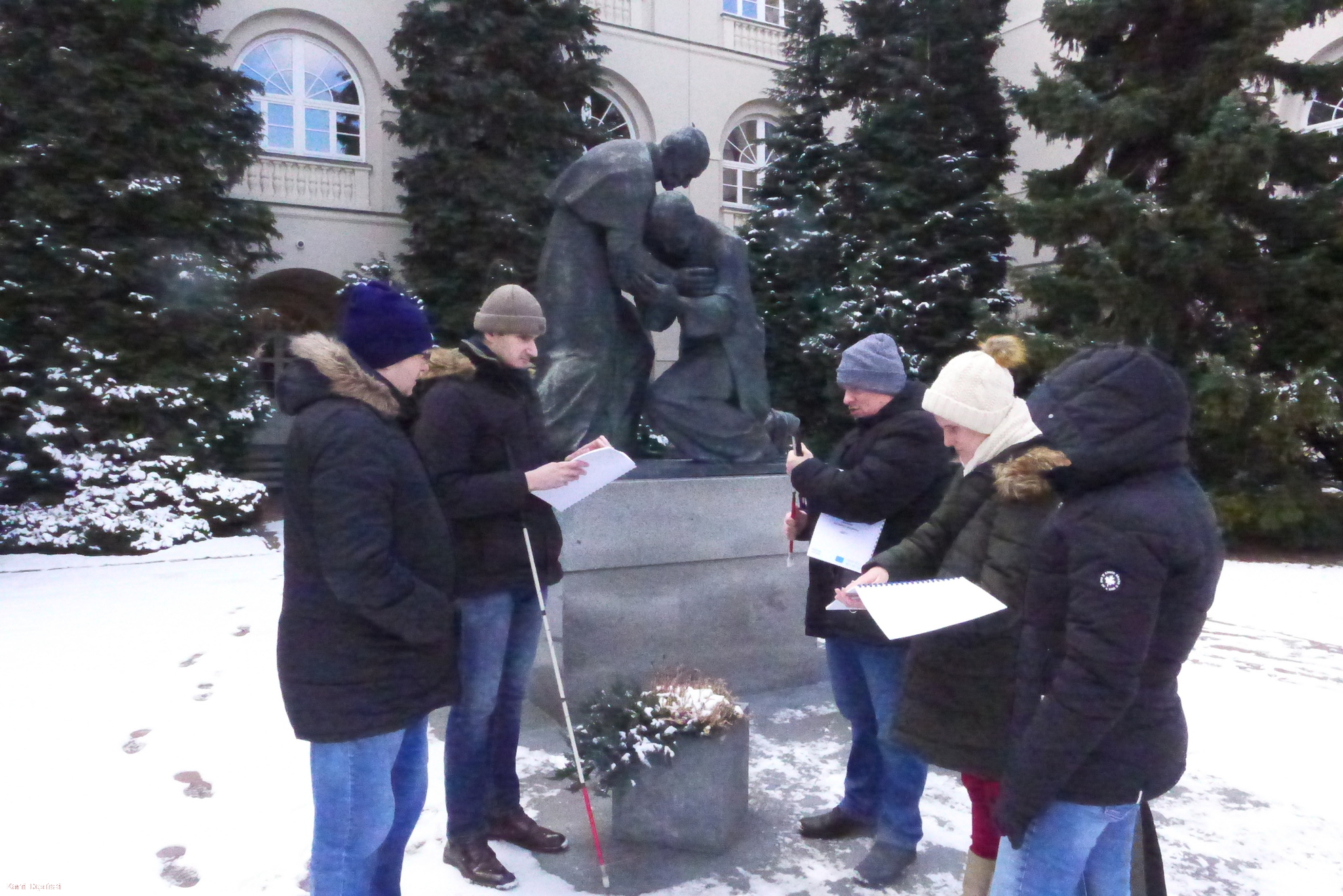We invite you to follow the results of the joint work of Polish and Ukrainian partners within the PBU Programme, made possible thanks to co-funding from the European Union.

Modern technology is narrowing down the gap in the accessibility of visual art for people who are blind or visually impaired. The range of accessible exhibits is no longer necessarily limited to sculpture. Images and objects that are too small (e.g. jewellery) or too large (e.g. buildings) can be presented in a variety of formats that can be accessed by people who are completely blind - tactile graphics, 'talking' tactile drawings and diagrams, 3D models and audio description. Attempts at adapting exhibits that can be 'explored by hand' in 4 museums in Lublin and 2 in Ivano-Frankivsk are receiving a very positive response. Interestingly, not only visually impaired persons, but also sighted people, for whom tactile versions of 3D images and models are a novelty, confirm that such adaptations also have educational value.
The aim of the project "Invisible heritage: exchange and implementation of good practice in access to culture for persons with a visual impairment" project (acronym: TouchingThePast) was to provide visually impaired persons with the opportunity to access cultural heritage, as close as possible to that of sighted people, and to enable the cultural institutions involved to welcome visually impaired visitors.
A general description of the TouchingThePast project, implemented by the John Paul II Catholic University of Lublin (PL) and the Vasyl Stefanyk Precarpathian National University (UA), can be found here.
![]()
![]()
The John Paul II Catholic University of Lublin purchased software and specialised equipment which made it possible to prepare adaptations of exhibits accessible to visually impaired people. All training organised as part of the project was carried out with the use of the purchased equipment. The equipment was also used for production of accessible adaptations[1] of selected exhibits.
The project partners purchased, among others:
![]()
![]()
DESIGN AND PRODUCTION OF ACCESSIBLE ADAPTATIONS
Adaptations include: tactile drawings, adaptations of selected images (with tactile lines and textures highlighting key passages), 3D printed models, Braille and audio description.

The adaptations can be viewed here
![]()
Preparing useful tactile adaptations requires special knowledge and special technology, so the design and production of artworks in accessible formats should be preceded by workshops for museum and art gallery staff and city tour guides. Special training is also necessary for blind visitors, who may not be able to assign meaning to convex lines and textures and 'create an image' of certain objects from tactile drawings or three-dimensional models. The fact that something is tactile (e.g. a convex line drawing) does not automatically mean that the adaptation will be understood. Clarifying the relationship between a three-dimensional object and its two-dimensional representation in the form of a drawing is crucial for understanding 'accessible' adaptations of images or drawings representing people, animals, buildings, architectural details, etc.

![]()
TRAINING FOR UNIVERSITY STAFF, MUSEUMS AND TOURIST GUIDES
The project partners organised three editions of training courses:
Each course included four workshops:
![]()
TRAINING FOR VISUALLY IMPAIRED PERSONS
Both project partners, with active participation of museum representatives, offered trainings to visually impaired pupils and students. The training sessions in Lublin and Ivano-Frankivsk focused on improving participants' skills in understanding the relationship between three-dimensional objects created for them and their two-dimensional representations as tactile graphics. Acquiring such basic skills is crucial for blind or visually impaired people to interact in a meaningful way with drawings or images. Tactile drawings can be successfully used as accessible adaptations of images.
![]()
![]()
GUIDEBOOKS
Project partners jointly prepared two separate guidebooks (one for persons with total blindness and one for visitors with low vision), presenting the sights of Lublin and Ivano-Frankivsk. The guides are used by blind people or those who know Braille. The guidebooks are available at tourist information points employing city guides. Each illustration is accompanied by a description in Braille and large print.
![]()
PROMOTIONAL BROCHURES
They include information about the stages of preparation of adaptation of exhibits and photographs of sample adaptations. They were distributed to organisations involved in supporting education and access to culture for persons with visual impairments.
![]()
![]()
GUIDED TOURS IN LUBLIN AND IVANO-FRANKIVSK

During the excursions, visually impaired persons had a good opportunity, sometimes for the first time in their lives, to get to know various objects (e.g. sculptures, historical sites) and museum exhibits. They explored them using Braille guidebooks prepared as part of the project and by exploring manually various objects, which were described by guides and caregivers of the blind and visually impaired.
![]()
PROJECT CLOSING CONFERENCE

A conference closing the project was held in December 2021. Its first part entitled 'The Invisible Heritage of Ivano-Frankivsk and Lublin' was organised at the premises of the Lead Partner (The Catholic University of Lublin). The second part entitled 'Invisible Heritage in the World: Making Art Visible by Touch' was a virtual conference organised on the YouTube channel. The conference was attended by more than 100 participants. Participants had the opportunity to visit exhibitions organised by three museums with accessible exhibits (National Museum in Lublin, Brama Krakowska (Gate of Cracow) - Museum of History of the City of Lublin, Open Air Village Museum in Lublin).
![]()
[1] The term "adaptation" is used in the sense of accessibility - e.g. making a museum exhibit available to people who are blind - a tactile version of the image, a three-dimensional copy of the object, etc. with a description in Braille.
Was this page useful?


